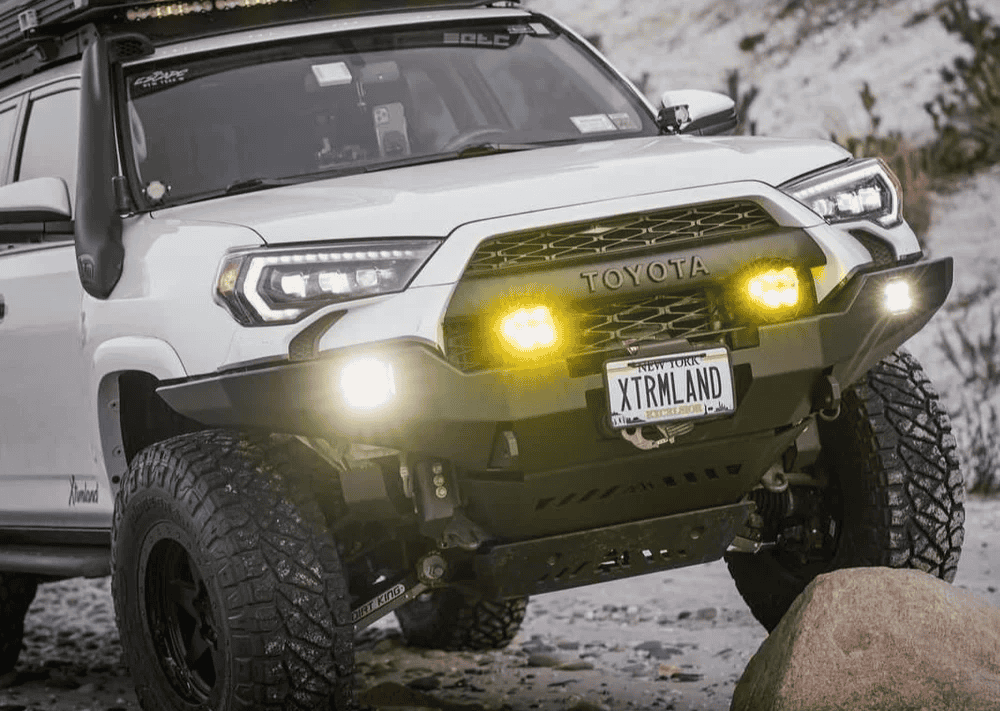Overland Vehicles

A foamie truck camper uses rigid foam sheets as the core structure, then adds a skin for strength and weather protection. Builders often choose extruded polystyrene for its closed cell nature and reliable compressive strength, while expanded polystyrene can work if sealed well and kept within conservative loading. The result is a foam truck camper that is light, quiet, and thermally efficient. Lower mass means easier handling, shorter braking distances, and less stress on suspension. The method also tends to reduce condensation risk when paired with proper ventilation and thermal breaks.
Think of the shell as a sandwich. Foam panels form the core, while interior and exterior skins manage tension and compression. Common skins include fiberglass with epoxy, canvas set in glue, or thin plywood bonded to the foam. Strategic framing in wood or aluminum ties together mounting points and door or window cutouts. Reinforce high stress zones like corners, roof openings, and tie downs with additional fabric and overlapping seams. The diy foam truck camper concept succeeds when each joint is wide bonded, not just spot fastened.
Foam cores deliver strong R value per inch, which keeps interior temps stable during shoulder seasons. To manage moisture, seal all edges, fillet corners with thickened epoxy or strong glue, and apply UV stable paint or topcoat to the outer skin. Aim to keep a midsize truck topper style build below a few hundred pounds, including windows and hardware. Track weight over time as gear accumulates and store heavier items low and centered to protect handling.
Start with a scale layout of your bed, wheel well heights, and cab clearance. Identify where sleeping, ventilation, and wiring will run before cutting any panels. Design the door first, then the roof openings, since these control airflow and emergency egress. Dry fit every panel with painter’s tape or temporary braces and only bond once alignment is proven.
Payload capacity sets the ceiling for everything. Add passengers, water, fuel, recovery gear, and the camper shell to estimate your live load. Confirm tie down strategy that uses the truck’s rated points and spreads forces across the shell. Provide safe entry and exit, smooth edges, and non skid surfaces. For ventilation, size intake and exhaust paths so you can exchange cabin air quickly without drafts at face level.
Use high quality construction adhesives designed for foam compatibility or epoxy systems with fillers for fillets. Large surface area bonds outperform mechanical fasteners in foam core assemblies. Stagger seams so no four corners meet at one point, and wrap skins over edges to create a monocoque effect. After structural cure, add window and door hardware, then finish with primer and a UV resistant topcoat. Inside, consider thin paneling or fabric for easy cleaning and a warm feel.
A foamie truck camper excels at weight savings, insulation, and build flexibility. It also avoids the corrosion and rot common in metal or wood heavy designs. The tradeoffs include lower tolerance for point loads and the need for meticulous sealing. Do not mount racks directly into foam without proper hard points. Avoid concentrated forces on roof edges and maintain generous radii on corners to reduce stress.
For real world durability, think in layers of defense. Start with sound structure, then add a tough skin, then apply a protective topcoat. Keep water paths predictable with drip edges and gutters, and service sealants seasonally. Pack a small field repair kit with two part epoxy, glass tape, and alcohol wipes for quick fixes.
When your plans outgrow a home project, or you want integrated electrical, heating, and storage built to commercial standards, a professional shop can take you from concept to tested result. Explore the range of purpose designed rigs and see what a fully engineered platform looks like at Overland rigs we build. If you have a specific truck and vision in mind, our team can deliver a tailored solution at Custom overland upfit. Curious about process, craftsmanship, and support after pickup? Learn more at Why choose OZK Customs.
OZK Customs crafts road ready adventure platforms with clean power systems, modular interiors, and durable exteriors that shrug off weather. We listen first, then build to your travel pattern, whether you chase trailheads or roam long distances. Share your goals and we will map a clear path from design to delivery.
We are a custom builder. We do not rent vehicles or assist with customer DIY projects.
Thank you for reading. Explore our services and get started today.
Ready to skip the guesswork and get a professionally engineered build that is safe, strong, and tailored to your travel style? Share your goals and timeline, and our OZK Customs team will deliver a road ready upfit with clean wiring, tested systems, and purpose built storage. Submit the form to start your custom plan.
ADDRESS:
6159 E Huntsville Rd, Fayetteville, AR 72701
PHONE:
(479) 326-9200
EMAIL:
info@ozkvans.com